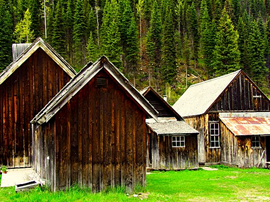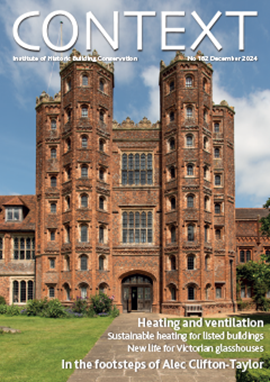IHBC response to revised NPPF
In July 2018, the government published the revised National Planning Policy Framework (NPPF).
In response, IHBC officers highlighted the chances missed, as Policy Secretary Roy Lewis said, "...from a built heritage perspective, the revised NPPF is an opportunity lost", while IHBC Communications Secretary Dave Chetwyn, noted that, "There appears still to be an assumption of high growth land and property economies, but this is not just a north-south issue – we are addressing problems in areas with serious viability challenges."
IHBC Policy Secretary, Roy Lewis said:
"The new policy statement that ‘the creation of high quality buildings is fundamental to what the planning and development process should achieve’ is a welcome response to the IHBC’s joint submission with Civic Voice and others on the ‘Design’ element of the Framework. However, the Institute’s comprehensive suggestions to refine the policy base for ‘Conservation of the historic environment’ has made no impact whatsoever.
"It is particularly disappointing that the government has done nothing to help resolve the interpretation problems caused by the policy distinction between ‘substantial harm’ and ‘less than substantial harm’. IHBC’s advice that that the distinction is an unnecessary complication has been ignored. As a result, debating ‘where the substantial harm/less than substantial harm join comes’ will continue to be an unnecessary complication in the process of determination of planning proposals that have a harmful impact on heritage assets, particularly in planning enquiries.
"The Institute’s call for specific policies that acknowledge the fundamental differences between listed buildings, conservation areas, scheduled monuments, parks and gardens, etc. has also fallen on deaf ears.
"Surprisingly, the reference to ‘optimum viable use’ in relation to countervailing benefits that might outweigh less than substantial harm, has been re-introduced having been omitted in the consultation draft. This maintains the inconsistency that ‘optimum viable use’ is a consideration if the proposal causes less than substantial harm whilst ‘viable use’ is the issue if substantial harm is caused. However, a conveniently inserted ‘where appropriate’ proviso gets rid of the ridiculous notion of optimum viable use of a conservation area.
"It’s not all good news in the ‘Design’ chapter either (now re-titled ‘Achieving well-designed places’), which no longer has a protective provision for designated heritage assets or their settings. And the deletion of former paragraph 60, along with its confirmation that it is proper to seek to promote or reinforce local distinctiveness, cannot be helpful.
"Unfortunately, it will be a long wait before we get another opportunity to shape planning policy for the historic environment. From a built heritage perspective, the revised NPPF is an opportunity lost."
This article was originally published here on 27 July 2018 by IHBC.
--Institute of Historic Building Conservation
[edit] Find out more
[edit] Related articles on Designing Buildings Wiki
IHBC NewsBlog
IHBC Annual School 2025 - Shrewsbury 12-14 June
Themed Heritage in Context – Value: Plan: Change, join in-person or online.
200th Anniversary Celebration of the Modern Railway Planned
The Stockton & Darlington Railway opened on September 27, 1825.
Competence Framework Launched for Sustainability in the Built Environment
The Construction Industry Council (CIC) and the Edge have jointly published the framework.
Historic England Launches Wellbeing Strategy for Heritage
Whether through visiting, volunteering, learning or creative practice, engaging with heritage can strengthen confidence, resilience, hope and social connections.
National Trust for Canada’s Review of 2024
Great Saves & Worst Losses Highlighted
IHBC's SelfStarter Website Undergoes Refresh
New updates and resources for emerging conservation professionals.
‘Behind the Scenes’ podcast on St. Pauls Cathedral Published
Experience the inside track on one of the world’s best known places of worship and visitor attractions.
National Audit Office (NAO) says Government building maintenance backlog is at least £49 billion
The public spending watchdog will need to consider the best way to manage its assets to bring property condition to a satisfactory level.
IHBC Publishes C182 focused on Heating and Ventilation
The latest issue of Context explores sustainable heating for listed buildings and more.
Notre-Dame Cathedral of Paris reopening: 7-8 December
The reopening is in time for Christmas 2025.
















